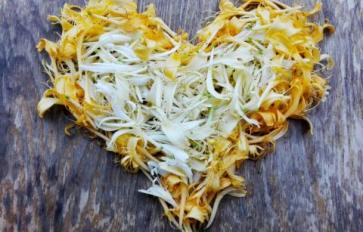
Asters are a member of the family Asteraceae or aster family of the genus Aster L. or Aster P having nineteen species. The plant grows primarily in North America but depending on the species can be found in South America, Europe, and Asia. They have been cultivated into many varieties like the China Aster, the Bushy Aster, and the New England Aster. The name was derived from the Greek language, referring to the star-like appearance of the bloom. The plant has been used around the world—by the ancient Greeks, Native North Americans, French, English, and Germans, for example. The aster has been used for medicinal purposes throughout the world for a myriad of illnesses and wounds. The entire plant was used: the flower, the stem, the leaves, and the roots. In some areas, the plant was used as a food because of its rich nutrient content. The aster is a late season blooming plant that adds color to the landscape until the first frost and is excellent as a cut flower for arrangements.
Appearance of Asters
The aster has an intricate bloom that grows from one inch to one-and-one-half inches in diameter. It is a composite of minute tubular flowers that group in a central disk and are surrounded by petals. Depending on the variety, the color of the disk flowers may not be the same as the petals. The petals can be white, shades of purple, hues of blue, and various tints of pink surrounding a yellow center. The leaves can have serrated edges depending on the variety and tend to be dark green; they are shaped long and slender with a pointed tip resembling the shape of the petals. The plant can grow in various sizes.
Health Benefits of Asters
The leaves of the aster have substantial protein and B vitamins like thiamin and niacin. They are also rich in vitamin C and contain beta-carotene and riboflavin. The leaves have a significant amount of minerals that include calcium, phosphorus, iron, and potassium; and they contain a high amount of fiber.
The many varieties of asters have been an important healing tool for many cultures. The Chinese used the plant to control hemorrhaging, malaria, dysentery, epilepsy, fevers, pulmonary disorders, and animal poisoning. The Chippewa used it for earaches; the Mohawks used it for women with intestinal inflammation; and many tribes used the plant to control diarrhea.
Asters in the Garden
Asters add variety to any landscape. They bloom from late summer to early fall after many flowers begin to fade. The plant can grow from as low as eight inches and can reach a height of eight feet. The range in size makes it ideal to create texture to the landscaping as a border plant, a background plant, in rock gardens, and in wildflower gardens. They are an added benefit to butterfly gardens as they bloom through autumn.
Asters are easily grown and do not need much care. They are a perennial plant that does well in full sunlight. They can be grown from seed started in containers and placed in the garden as seedlings for appropriate spacing. They can also be planted from root cuttings, four to six inches apart, depending on the variety. The plant will flower in late summer and will maintain blossoms though autumn. They do well when adding fertilizer every month and mulch can be added for appearance and to control weeds.








